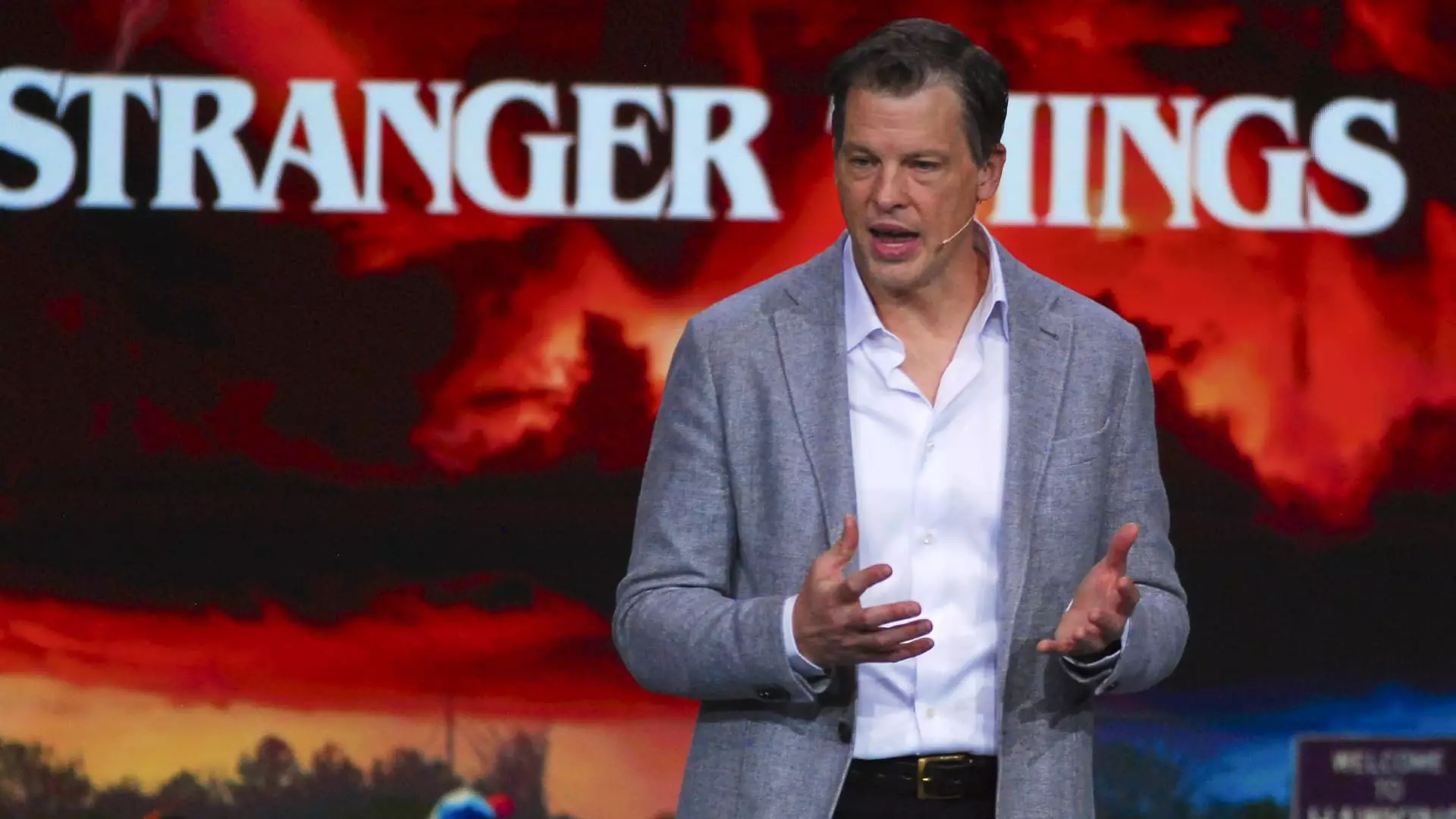Even in the swirling chaos of economic downturns, Netflix stands as a testament to resilience, boasting impressive figures that, on the surface, indicate a robust operational performance. Recently, the streaming giant reported a stunning operating margin of 31.7% for the first quarter—significantly exceeding predictions of 28.5%. This figure, while laudable, must be examined closely against the backdrop of a slowly crumbling economy marked by fluctuating consumer confidence. As the U.S. grapples with its second-lowest consumer sentiment since 1952, it raises the question: can streaming services remain consumers’ go-to source of entertainment during tough financial times?
The Dichotomy of Short-term Triumphs and Long-term Strategy
Netflix’s management paints an optimistic picture with a confident guidance of 33.3% for the upcoming quarter, easily outpacing analysts’ expectations. However, reading between the lines reveals a reluctance—an unwillingness to adjust long-term outlooks despite beaconing short-term victories. In their earnings report, Netflix stated, “There’s been no material change to our overall business outlook”—a phrase that subtly echoes uncertainty about the second half of the year. Herein lies a critical juxtaposition: while streaming may thrive in a recessionary climate as a cost-effective entertainment option, the company’s hesitance to revise projections indicates an undercurrent of trepidation.
Market Realities: Challenge the Status Quo
The core of Netflix’s argument rests on its historic resilience during economic dips. But let’s not kid ourselves; consumer behavior is complex. As entertainment budgets tighten, the real test will be whether Netflix can effectively stave off subscriber churn. Although the lowered cost of home entertainment—$7.99 for a basic ad-supported plan—presents an attractive option relative to other leisure activities, the challenge lies in retaining subscribers amidst economic adversity. Netflix needs to innovate not only its offerings but also its structure.
The Missing Pieces: Subscriber Transparency
Interestingly, Netflix has opted to forego reporting its quarterly subscriber numbers this time around. This is a decision that does more than just obscure transparency; it raises alarm bells for analysts and investors alike. How can stakeholders gauge true performance without insight into subscriber trends? Could this strategic withdrawal hint at troubling stats that the company prefers to avoid sharing? By solely reporting revenue, Netflix is essentially asking trust from its shareholders without offering the full picture—a trade that could appear disingenuous in light of the economic climate.
Retention: The Bedrock of Future Growth
Co-CEO Greg Peters asserts that retention rates remain stable and strong, yet in a volatile economic environment, such assurances may fall flat. The sustainability of Netflix’s appeal heavily relies on its ability to adapt its service models to retain subscribers who may be evaluating their expenditures more critically than ever. Coming out strong now will possibly protect its market share, but lingering doubts about long-term viability remain unless Netflix dramatically re-evaluates its approach to subscriber engagement and transparency.
In a world desperately grasping for fiscal certainties, the stakes for Netflix are higher than ever. It is not solely about maintaining margins; it’s about evolving into a service that truly understands and caters to its consumers in a challenging economic landscape.

